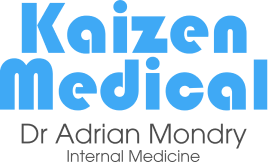Hypothyroidism, characterised by insufficient production of thyroid hormones, affects various bodily systems, including metabolism, energy levels, and cardiovascular function. Recognising its symptoms, causes, and management is key to supporting individuals with this condition.
This article provides a comprehensive overview to enhance awareness and guide effective care.
Common Symptoms of Hypothyroidism
The symptoms of hypothyroidism develop gradually, often starting subtly and intensifying over time. Recognising these signs helps avoid delayed diagnosis. Common symptoms include:
Persistent Fatigue: A constant sense of exhaustion that does not improve with rest or adequate sleep. This can significantly affect daily activities and overall well-being.
Unexplained Weight Gain: Gradual weight gain that occurs despite consistent dietary and physical activity habits. This is primarily due to slowed metabolism and fluid retention.
Cold Intolerance: A common complaint is feeling cold, even in comfortably warm environments, often starting in the hands and feet. This results from reduced heat production in the body.
Skin, Hair, and Nail Changes: The skin may become dry, rough, or pale. Hair often appears brittle, thin, and more prone to shedding, while nails may become weak or ridged.
Cognitive Difficulties: Challenges such as forgetfulness, difficulty concentrating, and slower thinking are frequently reported. These symptoms can impact work, learning, and overall quality of life.
Key Causes of Hypothyroidism
Hypothyroidism can arise from various underlying factors, and identifying the cause is necessary for effective treatment. Common causes include:
Autoimmune Conditions: Hashimoto’s thyroiditis is the most common cause in iodine-sufficient regions. It involves the immune system attacking the thyroid gland, leading to reduced hormone production.
Medical Treatments: A history of thyroid surgery, radioactive iodine therapy, or external radiation to the neck can impair thyroid function. Certain medications, such as amiodarone or lithium, may also disrupt hormone synthesis.
Iodine Imbalance: Both iodine deficiency and excessive iodine intake can interfere with thyroid hormone production. While iodine deficiency is rare in developed countries, over-supplementation is a growing concern.
How Hypothyroidism is Diagnosed
Diagnosing hypothyroidism requires a combination of clinical evaluation and laboratory investigations to confirm the condition and identify its underlying cause.
Thyroid Function Tests (TFTs)
- TSH and Free T4 Levels: Hypothyroidism is confirmed by elevated TSH levels accompanied by low free T4 levels, indicating insufficient thyroid hormone production. Subclinical hypothyroidism is identified when TSH is mildly elevated but T4 levels remain within the normal range.
- Thyroid Antibodies: Testing for anti-TPO (thyroid peroxidase) antibodies can help diagnose autoimmune thyroiditis, such as Hashimoto’s thyroiditis, which is a common cause of hypothyroidism.
Physical Examination
Characteristic physical signs often seen in hypothyroidism include bradycardia, dry or flaky skin, brittle hair, and facial puffiness, particularly around the eyes. In some cases, an enlarged thyroid gland (goitre) may also be detected.
Additional Testing
Additional investigations can reveal systemic effects of hypothyroidism, such as dyslipidaemia (elevated LDL cholesterol and triglycerides) and normocytic anaemia (normal-sized red blood cells with a reduced count). These findings are often associated with long-standing or untreated cases and provide further evidence to support the diagnosis.
Management of Hypothyroidism
The management of hypothyroidism focuses on restoring euthyroidism and alleviating symptoms through tailored medical therapy and consistent follow-up.
Thyroid Hormone Replacement Therapy
Levothyroxine remains the treatment of choice. The initial dose is adjusted based on the patient’s weight, with lower starting doses recommended for older adults or those with cardiovascular conditions. Dosage changes are guided by TSH levels and the patient’s clinical response.
Monitoring
TSH levels should be reassessed 6–8 weeks after starting or adjusting therapy to allow the body to stabilise with the new dosage. Once thyroid hormone levels are stable, annual monitoring is generally sufficient unless symptoms return or risk factors emerge.
Considerations for Specific Patient Groups
Gradual dose adjustments are advised for patients with cardiovascular conditions to reduce the risk of complications such as arrhythmias or myocardial ischaemia. Pregnant individuals require more frequent monitoring due to increased thyroid hormone demands during pregnancy.
Long-term Management of Thyroid Health
Although hypothyroidism may not always be preventable, regular monitoring and supportive measures can help maintain thyroid function and minimise complications. Key strategies include:
Routine Monitoring: Conduct regular thyroid function tests to track hormone levels and identify changes early, especially in individuals with subclinical hypothyroidism or known risk factors.
Balanced Diet: Promote a diet that includes iodine-rich foods, such as seafood and dairy, while cautioning against excessive iodine intake, which can worsen thyroid dysfunction.
Medication Adherence: Ensure consistent use of prescribed levothyroxine to stabilise hormone levels and prevent the recurrence of symptoms.
These measures support effective long-term management and improved overall health.
Conclusion
Hypothyroidism can be effectively managed when recognised and treated appropriately. Recognising its symptoms and underlying causes is key to timely diagnosis and effective intervention. With the right treatment and consistent follow-up, individuals with hypothyroidism can lead healthier and more fulfilling lives.
If you are experiencing symptoms of hypothyroidism, schedule a consultation to discuss personalised care and management options.


